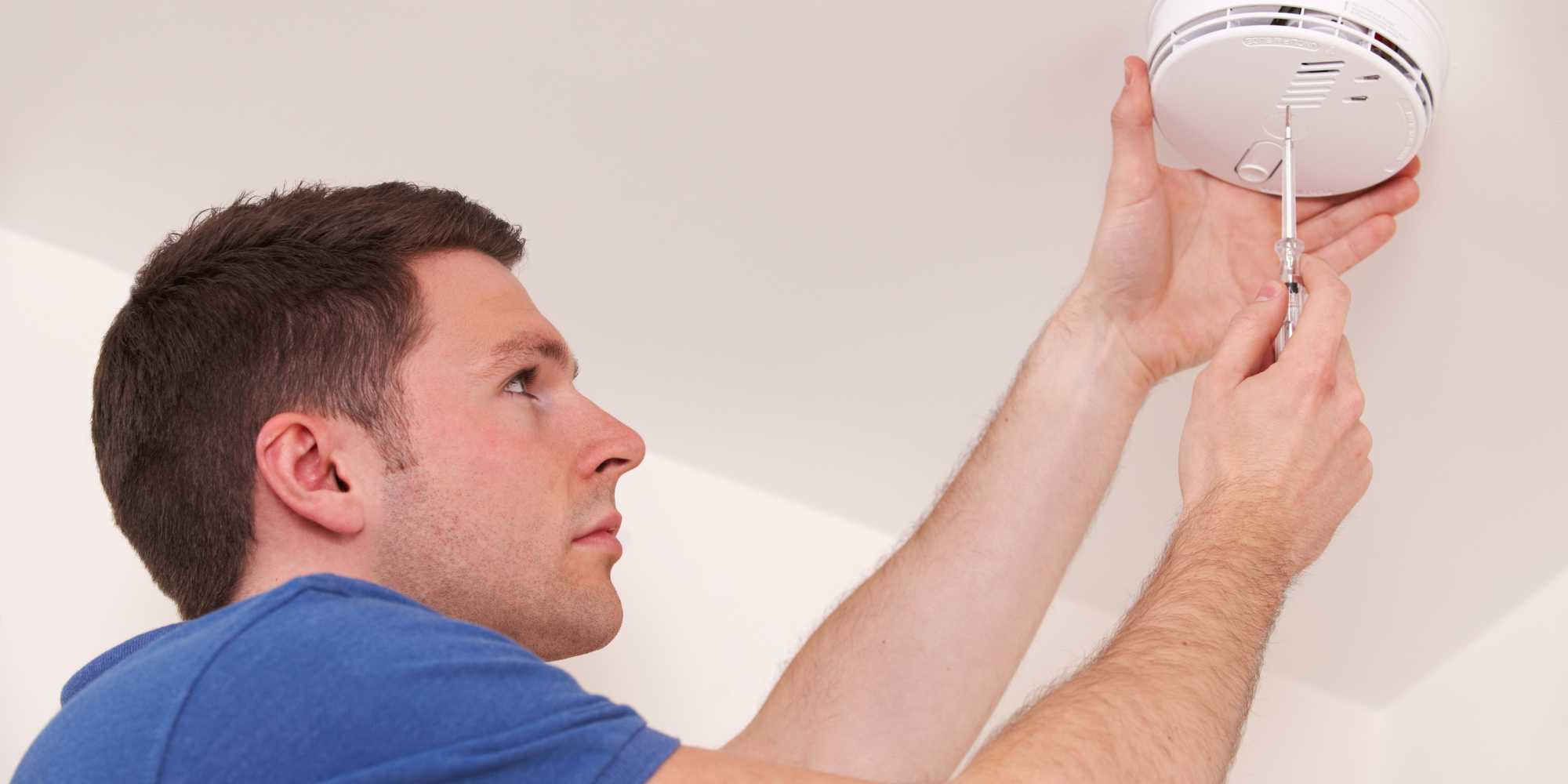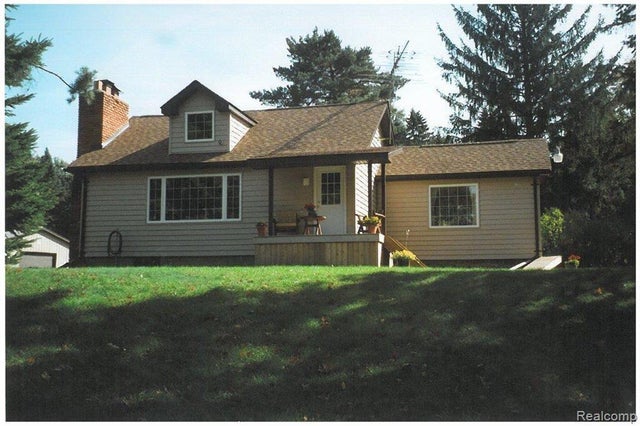Welcome to homeownership in Metro Detroit! Whether you’ve just closed on a historic fixer-upper in Detroit or a cozy bungalow in Royal Oak, one thing is certain: you’re the landlord now. The joys of owning a home come with the responsibility of maintaining it. Staying on top of upkeep isn’t just about avoiding surprise repairs – it’s about keeping your family safe, protecting your investment, and preserving the long-term value of your home. In a community like Metro Detroit, where we face humid summers, blustery falls, and sub-zero winters, home maintenance is a must for every new homeowner.
In this friendly, hometown guide, we’ll walk through an essential home maintenance checklist tailored for first-time homeowners (and savvy locals alike). From testing your smoke alarms to cleaning those gutters when Michigan maples drop their leaves, these tips will help you prevent problems before they start. Let’s dive into the must-know maintenance tasks that will keep your Metro Detroit home safe, comfortable, and running like a well-oiled machine!

1. Safety Detectors & Alarms: Protect Your Family First
Safety first! Start your home maintenance journey by checking all smoke and carbon monoxide detectors as soon as you move in. These small devices are true lifesavers, especially as many Metro Detroit homes are older and may not have up-to-date alarms. Make it a habit to:
- Test alarms monthly: Press the test button on each smoke and CO detector to ensure it beeps loudly. This quick check, done once a month, confirms that the device has power and can alert you in an emergency.
- Replace batteries regularly: Most battery-operated or hardwired detectors (with battery backup) need fresh batteries at least once a year. A popular tip is to swap batteries every daylight savings change in spring and fall. (If your detectors have sealed 10-year batteries, you won’t need to change those, but still test the unit.) Keep in mind that carbon monoxide (CO) detectors often require battery changes every 6 months if they use replaceable batteries.
- Mind the expiration dates: Smoke detectors don’t last forever – plan to replace each unit about every 10 years, and CO detectors roughly every 5–7 years. Check the manufacture date on the back of each alarm; if it’s past its prime, install a new one for peace of mind.
- Check other safety gear: Locate your fire extinguishers (there should be at least one in the kitchen and one near the furnace area). Verify the pressure gauge is in the green and the unit is not expired. If you don’t have extinguishers yet, invest in a couple of multipurpose (ABC) extinguishers and educate your household on how to use them. Also, if your home has a security system or smart alarms, test those features and change any default codes.
Staying vigilant about detectors is especially crucial in Michigan, where we heat our homes for many months a year. A working CO detector will alert you if a furnace vent is blocked or a generator is running too close to the house. Likewise, working smoke alarms dramatically increase your family’s chance to escape if a fire occurs – the U.S. Fire Administration recommends testing alarms monthly, and for good reason. By taking these simple steps, you’re making sure your first home is a safe home.
2. HVAC Systems: Keep Your Home Comfortable Year-Round
Your heating and cooling system (HVAC) is the heart of your home’s comfort – especially here in Metro Detroit, where January wind chills dip below zero and July humidity can be sweltering. New homeowners quickly learn that regular HVAC maintenance is key to avoiding breakdowns and high energy bills. Here’s how to care for your furnace and air conditioner:
- Change your filters on schedule: A dirty filter makes your furnace or A/C work harder and less efficiently. Check your furnace filter every month and replace it at least every 3 months (or sooner if it looks dirty). If you use inexpensive fiberglass filters, they should be swapped out monthly, whereas pleated filters can often last about two months between changes. Mark your calendar or set phone reminders – this simple task can extend the life of your HVAC system and improve your indoor air quality.
- Schedule annual HVAC tune-ups: Plan for a professional check-up of your furnace in the fall and your air conditioner in the spring. Technicians will clean burners and coils, check safety controls, and ensure everything is running efficiently before the heavy-use seasons. Most systems benefit from yearly servicing to catch issues early. For example, you don’t want to discover your furnace igniter is dead during the first winter freeze! Regular tune-ups also help your system use less energy – saving you money in the long run.
- Keep vents and units clear: Go around the house and make sure your heating vents and return air grilles aren’t blocked by furniture or rugs. Proper airflow keeps each room comfortable. Likewise, check that the outdoor A/C condenser unit is free of debris: clear away leaves, cottonwood fluff, or tall grass growing around it. Maintain about two feet of clearance so it can “breathe.” In fall, turn off the breaker to your A/C and cover the unit to keep snow and ice out over winter.
- Upgrade your thermostat (optional): If your new home came with an old manual thermostat, consider installing a programmable or smart thermostat. It’s a quick project that lets you set schedules (for example, lowering the heat at night or when you’re at work) and can trim your utility bills. Many Metro Detroiters use smart thermostats to balance comfort and cost, especially given our temperature swings.
- Listen and look for issues: As you settle in, pay attention to how your HVAC sounds and performs. Rattling, grinding noises, or weak airflow from vents can indicate a problem. Strange smells when the furnace runs (beyond that “first-time heat” smell) or frequent cycling on and off are also red flags. Don’t ignore these signs – a quick call to a local HVAC professional can prevent a minor issue from becoming a mid-winter furnace failure.
By giving your furnace and air conditioner a little TLC, you’ll ensure your home stays cozy in January and cool in August. Plus, preventative care (like filter changes and tune-ups) can extend the life of your HVAC equipment and protect the sizable investment you’ve made in your home’s mechanical systems. In short, treat your furnace and A/C well, and they’ll return the favor with reliable comfort year after year.
.png)
3. Water Heater Care: Avoid Cold Showers (and Water Damage)
There’s nothing like a hot shower on a cold Michigan morning – and your water heater makes it possible. As a new homeowner, you’ll want to keep your water heater in top shape so you’re not left shivering or, worse, dealing with a leak. Here’s your hot water maintenance checklist:
- Flush the tank annually: Over time, sediment (minerals from Detroit’s water supply) builds up at the bottom of tank-style water heaters. This sediment can form an insulating layer that makes the burner work harder and less efficiently. Flushing the tank once a year is a great preventative step. To flush it, you attach a garden hose to the drain valve at the bottom, turn off the heat source, and carefully drain out the water until it runs clear. This washes out accumulated sediment. Many homeowners do this each fall – pair it with winterizing your sprinklers as a yearly reminder. It’s a 15-minute task that can extend the life of your water heater by several years.
- Test the pressure-relief valve: That little lever on your water heater’s top or side is a temperature and pressure relief (TPR) valve – it’s a critical safety feature. Once a year, give it a quick test (when the water heater is not heating at the moment). Carefully lift the lever partway and let some water spurt out into a bucket, then let go; it should snap back and stop the flow. Warning: the water will be hot! If the valve doesn’t release water or won’t reseal, it may need replacement. A functioning TPR valve prevents dangerous pressure build-up.
- Check the thermostat setting: Most water heaters are set around 120°F by default, which is hot enough for comfortable showers and cleaning without scalding anyone or wasting energy. If yours is set much higher, consider dialing it down to ~120°F. This saves energy (each 10° reduction can save around 3–5% in energy costs) and prevents accidental burns.
- Inspect for leaks or drips: Get in the habit of glancing at your water heater and the floor around it every now and then. Small drips can turn into big leaks. Check the connections on the top (cold water inlet and hot water outlet), and look at the bottom for any moisture. If you see rust, corrosion, or puddles, address it promptly. Sometimes a leaking tank means the water heater is at end-of-life and needs replacement before it fails catastrophically. Better to replace on your schedule than to come home to a flooded basement.
- Know the age and plan ahead: Water heaters typically last about 8-12 years (gas models on the lower end, electric a bit longer). If the unit in your new home is already up there in age – say, 10+ years old – start budgeting for a new one down the road. You might even proactively replace an ancient water heater to improve efficiency and avoid an emergency swap in the dead of winter. For a long-term approach, some homeowners also have the anode rod (a sacrificial rod inside the tank) checked or replaced every few years. The anode rod attracts corrosion to help protect the tank lining; replacing it around the halfway point of the heater’s life can significantly extend the unit’s lifespan. This is a bit more advanced maintenance (often done by a plumber), but it’s good to know about.
Don’t forget, if you have a tankless water heater, maintenance is a little different: tankless units should be flushed/descaled (to remove mineral buildup) about once a year as well, using a vinegar solution pump kit. Check your manual for specifics.
By staying on top of water heater upkeep, you’ll ensure reliably hot showers and potentially avoid a major water clean-up. It’s all about preventative care – a theme you’ll notice with most of these home tips. A little effort now means fewer headaches later, and nowhere is that truer than with the trusty water heater in your basement or utility room.
4. Plumbing & Pipes: Prevent Leaks and Costly Water Woes
When you’re new to a home, it’s wise to learn the plumbing basics early on – water has a way of causing damage if something goes awry. Metro Detroit’s older homes, in particular, may have plumbing quirks or aging pipes that need a watchful eye. Keep your plumbing shipshape with these tips:
- Know your main shut-off valve: First things first, find out where the main water shut-off is located (typically in the basement or crawl space, near where the water line enters the house). In an emergency, like a burst pipe, you’ll want to quickly turn off all water to prevent flooding. Make sure the valve is accessible (not blocked by storage) and test that it can turn off; older valves can get stuck, so consider replacing a faulty one for peace of mind. Also identify individual shut-offs under sinks and behind toilets – these let you isolate leaks without killing water to the whole house.
- Guard against frozen pipes: Winters in Southeast Michigan can be brutal, and frozen pipes are a common concern. Before winter hits, insulate any exposed water pipes in unheated areas like garages, crawl spaces, or along exterior walls. Foam pipe insulation is inexpensive and easy to install. Disconnect garden hoses and drain exterior faucets (hose bibs) in the fall – many homes here have shut-off valves inside for those exterior spigots; close them and open the outside faucet to let it empty. If your home has a sprinkler system, get it blown out before the first hard freeze. These steps prevent costly pipe bursts when temps plunge.
- Check for leaks regularly: Make it a habit every few months to open up the cabinets under your kitchen and bathroom sinks and glance at the supply lines and drain trap. Look for any drips, moisture, or water stains. Do the same around the bases of toilets (is the floor caulked and dry? any rocking or seeping?). Even a small, slow leak can rot out cabinets or subfloors over time and spike your water bill. If you find a leak, fix it promptly – often it’s as simple as tightening a fitting or replacing a worn-out washer or toilet flapper. This proactive approach can save you from bigger repairs later.
- Keep drains flowing: Clogged pipes are no fun. Use drain screens or strainers in showers and sinks to catch hair and debris. Avoid dumping grease down the kitchen sink (it solidifies and causes clogs). If you notice a slow drain, tackle it before it becomes a full blockage – a simple snake or even a baking soda and vinegar flush can often clear gunk. For persistently slow or smelly drains, it might be worth having a plumber snake the main line, especially in older houses where tree roots can infiltrate the sewer line. Many Metro Detroit homeowners with big trees get their sewer line cleaned every couple of years as a preventive measure.
- Upgrade old plumbing bits: During your home inspection, you might have learned about the type of plumbing in your house. If you have older materials like galvanized steel or polybutylene, be aware that these have higher failure rates. In the long run, budgeting for an update to copper or PEX piping is wise. In the short term, consider replacing old rubber supply hoses (for sinks, toilets, washing machines) with braided stainless-steel hoses, which are far more burst-resistant. A common cause of indoor floods is a washing machine hose that bursts – those typically should be swapped out every 5 years or so. Think of these little upgrades as insurance against big water disasters.
One more tip: be mindful of what you flush. Stick to the rule that only toilet paper and natural waste go down the toilet. “Flushable” wipes are not really plumbing-safe – they can and will clog your pipes or the city sewers. Same goes for feminine products or paper towels. Save yourself the plumber bill by keeping those out of the pipes.
By being attentive to your home’s plumbing system, you’ll prevent the most common headaches like leaks, frozen pipes, and clogs. Water is necessary for life (and hot showers!), but when it’s escaping where it shouldn’t, it can ruin drywall, flooring, and furniture in a heartbeat. Stay ahead of plumbing issues with these habits – your future self (and your wallet) will thank you.
.png)
5. Sump Pump & Basement Watch: Keep Your Foundation Dry
Many homes in Metro Detroit have basements – and with basements often comes a trusty (or rusty) sump pump. This device is your last line of defense against groundwater flooding your basement during heavy rains or rapid snowmelt. If your home has a sump pump, maintaining it is critical, especially given our region’s history of intense rainstorms and spring thaws. Here’s how to keep your sump pump system in shape:
- Test the pump periodically: Every few months (and certainly before the rainy spring season), do a quick test. Pour a bucket of water into the sump pit to raise the float and make sure the pump kicks on and ejects water as it should. It should start automatically as the water rises and stop when it recedes. If nothing happens, or the pump sounds like it’s struggling, address it before the next storm hits. Often the fix might be as simple as adjusting a stuck float switch or plugging in an unplugged pump (it happens!).
- Clean the sump pit: Debris like silt, gravel, or leaves can accumulate in the pit over time, especially if you have an older basin without a lid. That gunk can clog the pump intake. Unplug the pump and clear out any debris in the pit every year or so (more if you notice things collecting). Also check the pump’s intake screen or grate – make sure it’s clear of mud or small rocks so water can flow freely. A clean pit means your pump won’t choke just when it’s needed most.
- Inspect the discharge line: Follow the pipe that leaves your sump pump to where it exits outside. Ensure the end of the line isn’t blocked by dirt or plants. There’s usually a one-way check valve near the pump – listen for a click when the pump shuts off (that’s the valve preventing backflow). In winter, make sure the discharge pipe outside doesn’t freeze; it should be pitched so water drains out, and some setups have a special freeze-proof outlet. The goal is to have water directed well away from your foundation – at least a few feet – so it doesn’t just soak back into your basement.
- Check your backup measures: Storms that cause basement flooding often knock out power – the exact time you need your electric sump pump the most. To avoid this catch-22, many homeowners install a battery backup sump pump or a water-powered backup pump. If you have one, test it as well (unplug your main pump and simulate a high water level to see if the battery pump kicks in). Also, inspect the battery (if applicable) and replace it per manufacturer guidelines (typically every 3-5 years). No backup pump? Consider investing in one if your basement is finished or you store valuables down there. It’s literally a flood insurance policy in mechanical form.
- Mind basement moisture generally: While you’re tending the sump pump, take a look around the basement. Check walls for any new cracks or efflorescence (white powdery residue from water seeping through). In older Detroit homes with stone foundations, a little seepage can be normal, but you want to catch changes early. Running a dehumidifier in summer can keep mold at bay. And make sure any items stored on the floor are in plastic bins or up on shelves – just in case. If your sump pump fails or an epic storm overwhelms it, you’ll limit damage by not having cardboard boxes wicking up water. (Pro tip: some locals even keep a spare sump pump on hand. If your area is prone to outages or heavy floods, a quick swap can save the day.)
Maintaining your sump pump is one of those low-effort, high-reward tasks. It mostly sits silently in a corner, but when it rains two inches in an hour and your neighbors are getting water in their basements, you’ll be glad your pump is primed and ready. In recent years, we’ve seen storms overwhelm Metro Detroit’s drainage systems – from flooded freeways to soaked basements. A well-maintained sump pump (with a backup, ideally) is your best defense against becoming part of that news story. It keeps your foundation dry and protects your basement space, which ultimately protects your home’s value.
6. Gutters & Downspouts: Steer Rainwater Away from Your Home
“Those beautiful Michigan maples drop a ton of leaves,” a wise neighbor might warn – and nowhere do those leaves cause more trouble than in your gutters. Your roof’s gutter and downspout system is designed to channel rain and melting snow off the roof and away from your foundation. If gutters are clogged, water overflows and can cause everything from roof damage to a wet basement. Keeping gutters clean is a quintessential fall chore in Metro Detroit (and often a spring one too). Here’s how to stay on top of it:
- Clean out debris at least twice a year: Generally, you’ll want to clear your gutters in the spring (after those “helicopter” maple seeds and early blossoms might fill them) and in late fall once the trees are done shedding leaves. In fact, many locals plan a big gutter cleaning in November before the first snowfall. Scoop out leaves, twigs, and gunk by hand (wear gloves) or with a gutter scoop. Flush the downspouts with a hose to ensure water runs free. If you have healthy, mature trees on your property, you might even need to do this a few times in the fall season – some oaks and maples drop leaves over many weeks. (Pro tip: if climbing ladders isn’t your thing, hire a local gutter cleaning service – it’s money well spent to avoid the risk of falls.)
- Check for proper drainage and leaks: After cleaning, run water from a hose into the gutter and watch to make sure it flows to the downspouts and out, rather than spilling over. While you’re at it, inspect for any gaps or leaks in gutter seams and corners. Look underneath during a rainstorm – do you see water dripping where it shouldn’t? Seal any small leaks with gutter caulk, and make sure gutter hangers are secure so the gutter has the correct slope toward downspouts. A sagging section can create a low spot where water pools and overflows. Everything should be tight and pitched.
- Extend downspouts away from the house: It’s not enough to just get water off the roof – you need to direct it away from your foundation. Ensure your downspouts have extensions or splash blocks that lead water at least 3-6 feet away from the foundation. If your home’s downspouts currently dump water right at the corner of the house, consider adding inexpensive plastic or aluminum extensions. This helps prevent that water from seeping into your basement or eroding the soil along your foundation. In the City of Detroit, homeowners are even encouraged to disconnect downspouts from the sewer system and drain them onto lawns or gardens to reduce sewer overload (just make sure it’s not aimed at your neighbor’s foundation!).
- Watch for ice dams in winter: In Metro Detroit’s freeze-thaw cycles, clogged gutters can contribute to ice dams – those thick ridges of ice at the roof edge. Ice dams form when heat escaping from your attic melts snow, which then refreezes at the colder eaves (often where gutters are). While the root cause is usually attic insulation/ventilation issues, clean gutters help ensure that meltwater has somewhere to go. If you notice icicles forming from gutters, it’s a sign of potential ice dams. You can gently knock down large icicles (careful not to damage the gutter), but long-term, address your attic insulation (more on that soon).
- Consider gutter accessories: If your home is in a heavily wooded area, you might explore gutter guards or screens that lay in or over the gutters to catch debris. These aren’t set-and-forget – they still require cleaning – but they can reduce the frequency. Also, in winter, some folks install heated cables along the roof edge to keep gutters from freezing. These are more common up north, but if you consistently have winter water problems, it might be an option.
Why all this fuss about gutters? Because uncontrolled water is the enemy of houses. Clogged gutters can lead to rotting fascia boards, water wicking into your roof sheathing, and basement leaks as water cascades next to your foundation. By spending a couple of hours with the ladder (or hiring a pro) each year, you’ll prevent potentially thousands of dollars in repairs. As the saying goes, “An ounce of prevention is worth a pound of cure,” and nowhere is that more true than in keeping water where it belongs – outside and away from your home.
7. Roof and Exterior: Maintain Your Home’s Protective Shell
Your home’s exterior – the roof, siding, brick, and foundation – is its shield against the elements. Metro Detroit’s mix of weather (scorching sun, heavy rain, wind storms, snow and ice) will, over time, wear on that shield. Regularly inspecting and maintaining your home’s exterior can prevent minor issues from turning into major headaches. Here’s your checklist for the outside:
- Inspect your roof annually (or after big storms): Take a good look at your roof at least once a year, and certainly after any severe windstorm or hail. You don’t necessarily have to climb up there – use binoculars or a camera with zoom from the ground. Look for loose, curled, or missing shingles. Any shingles that are damaged or gone should be replaced promptly, as they are your home’s first line of defense against water. Also check flashings (the metal pieces around chimneys, vents, and where roof meets wall) – if you see any that are bent up or rusted, address it. A minor roof repair now prevents a major leak later, which in turn protects your drywall, framing, and possessions from water damage. In winter, if you can do so safely, use a roof rake to pull excess snow off the eaves to help prevent ice dams.
- Examine siding, brick, and exterior paint: Walk around your house and look closely at the siding or brickwork. For wood or fiber-cement siding, peeling paint or cracked caulk can expose wood to rot – touch up any peeling paint to seal out moisture, and caulk gaps around trim or where wires/pipes enter the house. For brick, see that the mortar is intact; if you notice crumbling (tuckpointing needed) or cracks, especially stair-step cracks in the mortar, monitor them and consult a mason if they worsen. Small cracks can often be sealed with masonry caulk to keep water out. Also check the foundation walls for cracks. Hairline cracks are common in poured concrete and not a big worry, but bigger cracks or any that leak water should be evaluated. There are epoxy injection kits for DIY repair of concrete wall cracks if they’re accessible.
- Mind your doors and windows: Your exterior doors and windows need to be well-sealed against drafts and rain. Look at the caulking around window frames and door frames – if it’s cracked or missing, re-caulk those seams (use a quality exterior caulk) to prevent water intrusion and heat loss. If you have older windows, inspect the glazing putty on the panes and the weatherstripping. For doors, ensure the weatherstrip on the bottom (door sweep) and around the sides is in good shape; replace any torn or flattened strips. Not only will this keep out drafts (saving energy), but it also keeps out pests and moisture. Some Metro Detroit homes have storm windows or storm doors – if yours do, make sure those are properly closed or installed come winter for that extra insulating layer.
- Chimney and fireplace care: If your home has a fireplace and chimney, it’s important to maintain them for safety. Have a chimney inspection and cleaning (chimney sweep) every year or two, depending on use. Creosote buildup in chimney flues can cause chimney fires, so don’t neglect it if you use your fireplace regularly. The inspector will also check the chimney structure – flashing, cap, and masonry – for any issues. A cracked chimney crown or missing cap can let water and even critters in. Also test your fireplace dampers and make sure they open/close properly. If you have a brick chimney, keep an eye out for spalling bricks or missing mortar, especially at the top section which takes the brunt of weather.
- Maintain porches, decks, and walkways: Exterior wood structures like porches and decks need love too. Check wooden steps and floorboards for rot or loose nails. If wood is exposed, consider sealing or staining it every few years to prolong its life. Wobbly railing? Fix it now for safety. For concrete porches or walkways, monitor for cracks that could become trip hazards or let water in. A bit of concrete caulk or filler can seal small cracks. In winter, use pet-safe or concrete-safe ice melt to avoid eating away at your sidewalks and porch. And speaking of winter, before the snow flies, make sure you’ve put away or covered outdoor furniture and rolled up the hoses – this will help those items last and keep your exterior tidy.
Remember that curb appeal and structural integrity go hand in hand. A well-maintained exterior not only makes your home look cared for (which your neighbors appreciate), it also preserves the structural soundness and value of your property. Metro Detroit has a rich stock of older homes with character – by keeping up with exterior maintenance, you ensure that character lasts for generations. Plus, when it comes time to sell or refinance, a solid roof and sound foundation will make the process much smoother. Think of your home’s exterior as the armor; keep the armor in good repair, and it will protect everything inside.
8. Insulation & Weatherproofing: Save Energy and Stay Cozy
If you’ve ever felt a draft in an old Detroit house or marveled at a winter heating bill, you’ll understand the importance of insulation and weatherproofing. By properly sealing and insulating your home, you not only keep comfortable year-round, but you also prevent issues like frozen pipes and ice dams. And as a bonus, you’ll save money on those DTE and Consumers Energy bills. Here’s how to button up your home:
- Evaluate attic insulation: Heat rises, and in winter a poorly insulated attic is like a money-leaking sieve. Pop your head up in the attic and take a look. Generally, you shouldn’t see the tops of your ceiling joists – if they’re visible, you likely need more insulation. Metro Detroit homes should have around R-49 or more in the attic (which equates to roughly 15-18 inches of fiberglass batt or blown insulation). If your insulation is subpar, consider adding more. Blown-in cellulose or fiberglass can often be layered on top of existing insulation. This is one upgrade that often pays for itself in a few Michigan winters via energy savings. Proper attic insulation also prevents ice dams by keeping the attic cold, so snow on the roof doesn’t melt prematurely.
- Seal air leaks (air sealing): Insulation’s partner in crime is air sealing. Before winter, walk around on a chilly day and feel for drafts around windows, doors, and even outlets on exterior walls. Use exterior-grade caulk to seal cracks and gaps around window frames, door frames, and where any utilities enter the house (cable lines, AC pipes, etc.). For doors, install or replace weatherstripping around the sides and top, and ensure the door sweep underneath makes good contact with the threshold. Don’t forget the attic hatch or pull-down stairs – those often leak a lot of air; you can weatherstrip and insulate the hatch too. In older homes, check the basement or crawlspace rim joists (where the house frame sits on the foundation) – sealing those gaps with spray foam can stop cold air infiltration. Even simple foam gaskets behind outlet covers on exterior walls can cut drafts. Each little crack sealed is cold air stopped and dollars saved.
- Upgrade windows (if needed): Many Detroit-area homes still sport original wood windows. If yours are drafty but you’re not ready to replace them, there are a few steps to improve them. First, make sure the sash locks are functional and actually pulling the window tight. You can add weatherstripping to the sashes to reduce gaps. In winter, consider using that clear shrink film insulation on the window interiors – it’s not the prettiest, but it drastically cuts drafts and is easily removable in spring. If windows are very old and single-pane, eventually budgeting for double-pane replacements (or adding storm windows) will improve efficiency and comfort. That said, don’t overlook the historic charm – sometimes restoration and adding storms is better than wholesale replacement, depending on your preservation goals.
- Insulate other key areas: If you have an attached garage, an insulated garage door can help if there are bedrooms above. Likewise, make sure any plumbing on exterior walls is insulated (to prevent freezing as well as save heat). Hot water pipes can be insulated to reduce heat loss too. And check your ductwork in unfinished basements or attics – wrapping ducts with insulation can keep the air coming out of your vents closer to the temperature it’s meant to be. One often-forgotten spot: the attic ventilation. Yes, you actually want your attic cold in winter – so ensure your soffit vents (eaves) and ridge or gable vents are clear. If they’re blocked by insulation or debris, clear them out. Good ventilation works with insulation to prevent moisture buildup and ice dams.
- Consider energy upgrades: The State of Michigan and local utilities sometimes offer energy audit programs or rebates for insulation and air-sealing improvements. It might be worth looking into Michigan Saves or DTE’s energy efficiency programs. An energy audit can identify the worst leaks with tools like blower doors and infrared cameras. The auditor will then recommend fixes – often the ones we’ve listed. And if you implement them, you might get rebates or low-interest financing. Not only do you make your home more comfortable, but you also improve its resale appeal – buyers love energy-efficient upgrades (and lower utility bills).
In short, think of your home as a Yeti thermos in the winter and an ice chest in the summer – you want to keep the desired temperature in, and the outside temperature out. Proper insulation and weatherproofing are how you achieve that. You’ll feel the difference on those January nights when the wind is howling but your living room is free of drafts. Plus, your furnace and A/C won’t have to work as hard, meaning they could last longer (and you spend less on energy). It’s a win-win for you and your house.
.png)
9. Electrical System & Lighting: Stay Safe and Powered Up
Electricity is an area of home maintenance that you definitely want to treat with respect. While you might not need to tinker with your electrical system often, routine check-ups and safe practices can prevent hazards like shocks or fires. Metro Detroit homes range from brand-new builds with modern electrical systems to century-old houses that may have seen multiple wiring updates. Here’s how to keep your home’s electrical system in good shape:
- Know your electrical panel: Find your circuit breaker panel (often in the basement or a utility room) and familiarize yourself with it. The breakers should be labeled – if not, take some time to identify which breaker controls which part of the house and label them clearly with a sharpie or label maker. This will save you a ton of guesswork if you ever need to shut off power to fix something or in an emergency. Also, make sure you have at least one or two spare breaker slots or a subpanel if you plan future expansions (like adding a hot tub or EV charger). If your home has an old fuse box instead of breakers, consider having an electrician upgrade it in the near future; modern breaker panels are safer and more convenient (no fuses to replace).
- Test GFCI outlets and breakers: Modern codes require Ground Fault Circuit Interrupter (GFCI) outlets in bathrooms, kitchens, garages, exterior outlets – basically anywhere near water. These have the “Test” and “Reset” buttons. You should test them monthly or at least a few times a year by pressing the test button (the outlet should click off and whatever is plugged in should lose power), then pressing reset to restore power. If a GFCI doesn’t trip or reset, it’s faulty and should be replaced. GFCI outlets protect you from electrical shock – they are a critical safety feature. Likewise, if your electrical panel has any GFCI or AFCI breakers (arc-fault breakers, which prevent fire-causing sparks), test those per the manufacturer’s instructions.
- Inspect cords and lighting for hazards: Go through your home and check the power cords of appliances, lamps, etc. Are any frayed, cracked, or pinched by furniture? Replace damaged cords or have the item repaired – don’t run the risk of a short or fire. Avoid running extension cords under rugs or staples into walls; if you find you’re using extension cords permanently, that’s a sign you need an additional outlet installed. For light fixtures, use bulbs of the appropriate wattage (exceeding a lamp’s max wattage can overheat the fixture). This is a good time to consider switching to LED bulbs – they use far less energy and run cooler, plus they last years, meaning you won’t be climbing up to change that high ceiling bulb as often.
- Be aware of your wiring type: If your home was built in the mid-20th century (particularly 1960s-70s), ask about aluminum wiring. Some houses from that era have aluminum branch circuit wiring, which can be a fire hazard if not properly maintained (aluminum expands and contracts more than copper, which can loosen connections). There are fixes – special connectors or pigtailing to copper – that an electrician can do. Even older homes (pre-1950s) might have knob-and-tube wiring hiding in walls, or just old cloth-insulated wiring. While it may be working fine, it’s not designed for today’s electrical loads. Consider having an electrician inspect an older home’s wiring if it hasn’t been checked in decades. Upgrading circuits, adding dedicated circuits for big appliances, or just tightening all connections can prevent overheating. Insurance companies sometimes ask about these things, too.
- Safety devices: Every home should have some basic electrical safety tools. Keep a few fire extinguishers that are rated for electrical fires (Class C) – we mentioned this in Safety, but it bears repeating. Also, consider using whole-house surge protection (a device at the panel) or at least point-of-use surge protectors for your valuable electronics. Summer storms and outages can cause power surges when electricity comes back on, which can fry TVs or computers. A decent surge protector or UPS (uninterruptible power supply) for your computer is cheap insurance. And if you ever hear a buzzing from a breaker, see scorch marks on an outlet, or smell burning plastic, turn off power and call an electrician pronto – these are warning signs of potentially serious issues.
Working with electricity can be dangerous, so know your limits. It’s fine to change light bulbs, swap outlet cover plates, or even replace a light fixture or outlet if you’re comfortable and the power is off. But for anything beyond the basics (like replacing a breaker, running new wiring, or diagnosing mysterious power issues), it’s wise to call a licensed electrician. Metro Detroit has plenty of reliable electrical contractors who can ensure things are done to code. Keeping your electrical system in good repair not only keeps the lights on, but it also protects your home from one of the leading causes of house fires (electrical malfunctions). So stay illuminated, but stay safe!
10. Pest Control: Keep Unwanted Critters Out
Sharing your new home with family and friends is great – sharing it with rodents or insects, not so much. In Metro Detroit, we have our fair share of household pests: mice seeking shelter from winter cold, ants marching through kitchens in the summer, spiders in the corners, and even the occasional raccoon in the attic. A big part of home maintenance is pest prevention – blocking entry points and not rolling out the welcome mat for critters. Here’s how to keep those unwelcome guests at bay:
- Seal up entry points: Walk around your home’s exterior and look for any gaps or holes that bugs or rodents could squeeze through. Mice can enter through an opening as small as a dime! Common entry points include where pipes and wires penetrate the walls, gaps around exhaust vents, cracks in the foundation, and openings under eaves or in soffits. Seal cracks and holes with caulk, foam, or steel wool – for mice, stuffing steel wool in a hole and then sealing it with caulk/foam works great (they can’t chew through steel wool). Don’t forget the gap under garage doors – if you see light coming through, adjust the door sweep. Check that your dryer vent has a flap and isn’t stuck open. Basically, close the door on pests before they even try to come in.
- Keep it clean and dry: Pests are often attracted by food and water. Inside, keep your kitchen clean – wipe up spills, don’t leave dirty dishes out overnight, and store food (especially dry goods like cereal, rice, pet food) in sealed containers. A few crumbs can feed an army of ants. Take out the trash regularly and use cans with tight lids. In basements and crawl spaces, use a dehumidifier if it’s damp; insects like centipedes and silverfish thrive in high humidity. Fix any plumbing leaks or dripping faucets – not only for water conservation, but also because pests need water too. Outside, don’t leave pet food out and clean up under bird feeders (spilled seed can attract rodents).
- Yard maintenance to deter pests: Your landscaping can either invite or discourage pests. Trim tree branches that hang over or touch the house – critters like squirrels and even roof rats can use branches as highways to your attic. Keep shrubs and bushes a few inches away from siding, or better yet, a foot away; when vegetation is too close, it provides cover for insects and holds moisture against your house. If you store firewood, keep it at least 20 feet from the house and off the ground – stacked logs are a dream home for mice and also can harbor termites. Speaking of termites, avoid wood-to-ground contact around your foundation; don’t pile mulch too high against the house, and try not to have wooden siding or trim directly touching soil. A little barrier of space or stone can help.
- Use preventative treatments if needed: In our region, full-blown termite infestations are less common than in the South, but they do exist. If your home has a history of termites or you just want peace of mind, you could have a professional apply termite bait stations around the perimeter. For general pests, some homeowners have success with perimeter sprays (either DIY from the hardware store or as part of a quarterly service) to keep ants, spiders, and others from getting in. Sticky traps in the basement can alert you to insect activity. If you prefer greener methods, there are deterrents like peppermint oil cotton balls for mice (mice supposedly hate peppermint), though results vary. The key is monitoring – if you start seeing lots of a particular bug inside, that’s your cue to take action early.
- Know when to call a pro: Despite best efforts, you might encounter persistent pests. Carpenter ants, for instance, are common in areas with lots of trees and can chew through moist wood. If you see large black ants regularly inside, especially near windows or in spring, you might need a professional treatment to find and eliminate the colony. Same with wasp or hornet nests on your property – best handled by pros if they’re in tricky spots. And if you hear scurrying in the attic at night, it could be squirrels or raccoons. In Michigan, we have companies that specialize in humane wildlife removal and exclusion. They’ll find how the animal got in, remove it, and seal the entry. It’s worth it – a raccoon in the attic can do enormous damage if left unchecked (not to mention the noise and smell).
Pest control is partly about maintenance and partly about habits. By keeping your home buttoned up and tidy, you make it less attractive to critters. It’s much easier to prevent an infestation than to deal with one after it happens. Think of it like this: you want to make your home a “no vacancy” zone for pests. And if you ever feel overwhelmed, don’t hesitate to tap into local resources – for example, the Detroit area has professional pest control companies familiar with our local pest challenges (from keeping Detroit’s long-standing rat population in check, to evicting squirrels from attics in Bloomfield). A pest-free home is a healthier and happier home.
.png)
11. Yard & Landscaping: Curb Appeal Meets Functional Maintenance
Taking care of your yard isn’t just about making the home look nice for the neighbors (though that’s a perk) – it’s also about protecting your property. Proper landscaping maintenance can prevent damage to your house and keep your property value high. Plus, as a new homeowner in Metro Detroit, you’ll quickly appreciate having an outdoor space that you enjoy and that doesn’t create extra work for you. Here’s your to-do list outside:
- Mind your trees and shrubs: Metro Detroit is full of beautiful, mature trees (the trade-off for our lovely tree-lined streets is lots of raking!). Keep trees trimmed so that branches don’t scrape your roof or siding in the wind. Heavy, overhanging limbs can break in storms and cause serious damage, so if you have large trees near the house, consider having an arborist inspect them every few years. In fall, prune back shrubs and plants that are right up against the house – you want a bit of air space to prevent moisture and pests. If you have trees near power lines, most cities will trim them, or you might hire a tree service to do preventative trimming – better to cut safely on your terms than during a storm-induced outage.
- Lawn care basics: A healthy lawn not only looks good but also absorbs water (helping with drainage) and can deter weeds that attract pests. Mow regularly during the growing season, keeping your mower blade sharp so you don’t tear the grass. Set the mower height to about 3 inches – taller grass develops deeper roots and shades out weeds. In the fall, rake or mulch the leaves – leaving thick layers of leaves can smother the grass and lead to bare spots (plus, decaying leaves on walkways get slippery). Consider fertilizing and aerating in the fall, which is the best time to strengthen cool-season grasses like we have. Aeration pulls plugs of soil out to alleviate compaction (common in the clay soils of southeast Michigan) and helps water and nutrients penetrate. If you have sparse areas, fall is great for overseeding new grass as well. Come spring, your lawn will thank you with lush growth.
- Address grading and drainage: Take a walk around after a good rain – are there areas where water puddles near the foundation or in the yard? You want the ground next to your foundation to slope away at least 6 inches over the first 10 feet. If you have low spots against the house, add some topsoil to grade it away. This, combined with your gutter extensions, will go a long way to keeping your basement dry. If you notice water pooling in the yard, you might need to regrade or consider a French drain or dry well, but that’s a bigger project. For now, just be aware of your lot’s drainage. Also ensure that landscaping beds bordering the house aren’t trapping water against the foundation – sometimes edging or too much mulch can create a dam.
- Gardens and maintenance: If your new home came with garden beds or even a veggie patch, lucky you! Stay on top of weeding (a little every week prevents jungle status). In planting beds next to the house, don’t pile mulch higher than about 2-3 inches and keep it a few inches away from siding to avoid attracting termites or causing wood rot. If you have a sprinkler system, adjust the heads so they’re not spraying the side of the house or windows every day (that excess moisture can cause issues). As winter approaches, winterize the sprinkler system (or hose bibs as mentioned) and consider covering delicate plants or rose bushes after the first frost.
- Hardscape check: Look at your driveway, walkways, and patios. In Metro Detroit, the freeze-thaw cycle can crack concrete and asphalt. Seal small cracks in your driveway or walkway with the appropriate sealant to prevent water from getting in and making them worse. Late summer is a good time to seal asphalt driveways, for example. If you have a deck or fence, check the stain/paint – fall is a good time to re-stain wood decks so they’re protected from winter moisture. Also check any outdoor lighting is working (path lights, motion sensor lights, etc.) – good lighting improves safety and security.
Embracing yard work can actually be fun – it gets you outside and active. Plus, there’s a pride in making your little patch of earth look its best. One thing new homeowners often do is introduce themselves to neighbors while doing yard work. Don’t be surprised if the neighbor over the fence shares some tips about when the best time to prune the old oak tree is, or recommends a great local lawn service they use. Metro Detroiters love to swap notes on gardening and lawns (you’ll find out who has the green thumb on your block soon enough!). By keeping your landscape maintained, you’re enhancing your home’s beauty and also creating a buffer against pests, water, and weather issues. It’s truly where curb appeal meets practical maintenance.
12. Appliances & Home Interior Upkeep: Little Things Add Up
Our final category in the checklist is a bit of a grab bag – it’s the inside stuff that keeps daily life running smoothly. As a new homeowner, you now have a collection of appliances and systems that you might not have paid much attention to as a renter. Taking care of them will extend their life and prevent hazards. Plus, a well-maintained home interior just feels better to live in. Here are the key tasks for inside the home:
- Clean the dryer vent and lint trap: This is a big one for safety. Each time you use the dryer, clean the lint screen. But also, at least once a year, clear out the dryer vent duct that exhausts to the outside. Lint builds up in there and can become a fire hazard – in fact, thousands of house fires each year are caused by dryer lint ignition. Unplug the dryer, carefully pull it out, disconnect the vent hose, and vacuum out both the hose and the wall/exterior vent. There are handy dryer vent brush kits you can buy to snake through the line. Your dryer will run more efficiently and much safer with a clear vent. While you’re at it, check that the exterior vent flap opens freely and isn’t blocked by a bird nest or debris.
- Service major appliances as needed: Your refrigerator, dishwasher, washer, and oven will all benefit from a little love. For your fridge, vacuum the condenser coils (often on the back or bottom front) every 6-12 months to remove dust – clean coils release heat better and reduce the strain on the compressor. Make sure the fridge’s door seals are clean and sealing tight (no gaps when closed). For the dishwasher, clean the filter (usually a twist-out cylinder at the bottom) every few months – food particles can clog it. You can also run an empty cycle with a dishwasher cleaner or vinegar to freshen it up and prevent hard water scale. For the washing machine, check the hoses for any bulges or leaks; as mentioned earlier, replace rubber hoses with braided steel. Front-loading washers benefit from cleaning the door gasket and running a tub clean cycle monthly to prevent mold and odors. Don’t forget to clean the range hood filter above your stove – greasy buildup there can be a fire hazard; many metal filters can go right in the dishwasher.
- Maintain your HVAC from the inside too: In addition to changing filters (covered in HVAC section), take a vacuum to your heat registers and cold air returns occasionally to suck up dust and pet hair. If the previous owner had pets or it’s been years, you might consider a professional duct cleaning – opinions vary on its necessity, but some new owners do it for a fresh start (especially if allergies are a concern). Also, if your furnace has a humidifier attached (common in Michigan homes to combat dry winter air), remember to change the humidifier pad annually, usually in the fall, and clean the unit. Turn off the humidifier in summer months to avoid adding humidity when you don’t need it.
- Keep an eye (and nose) on things: Use your senses as you settle into your new home. If you smell mustiness, try to track it down – a little mold starting in a hidden corner of the basement or a leak under a sink can often be detected by smell before it’s visible. If you see paint bubbling or drywall discoloration, investigate for moisture behind it. Hear a running toilet that never stops filling? That’s likely a worn flapper – an easy fix that will save water. Small fixes like these prevent higher bills and bigger repairs. Also pay attention to your water bill and energy bills – a sudden spike in water usage could indicate a leak (for instance, a stuck toilet flapper or lawn sprinkler leak), and a higher gas bill could mean your furnace isn’t operating efficiently or a duct has come loose.
- Refresh and renew: Home maintenance isn’t all about preventing disaster – it’s also about making your space enjoyable. Plan to repaint rooms every so often (paint not only personalizes your space, but it also protects the walls). If you have hardwood floors, learn their maintenance needs – maybe just sweeping and using wood-friendly cleaners, and down the line, buffing or refinishing. Caulk the tub and shower edges if the caulk is old or cracking – that prevents water from seeping into walls (and looks cleaner too). Check your attic and basement periodically for any signs of pests or leaks as we discussed, but also to rotate stored items, change furnace filters, etc. By routinely walking through your home with a “maintenance mindset,” you’ll catch things early.
Finally, consider keeping a home maintenance journal or digital log. Jot down the dates when you did certain things: last filter change, last gutter cleaning, when you serviced the furnace, etc. This helps you stay on schedule and is handy info if you ever sell the home. Some homeowners even keep a binder with appliance manuals, receipts for upgrades/repairs, and a log of improvements. It sounds a bit nerdy, but when you can tell a future buyer “The roof was replaced in 2020 and the furnace was tuned up in fall 2024,” you build confidence and potentially value.
Whew! That was a lot, but remember, you don’t have to do it all at once. Home maintenance is an ongoing, year-round project, but it becomes second nature once you get into the routine. A great approach is to break tasks out seasonally: do the furnace, gutters, and winter prep in the fall; tackle lawn care, roof check, and AC service in the spring; etc. Many Metro Detroit families even make a fun family project day out of raking leaves or planting flowers – maintenance can build memories!
Love Your Home and It Will Love You Back
Becoming a homeowner is a proud milestone – especially in a community as tight-knit as Metro Detroit, where homes often stay in families for generations. By following this new homeowner maintenance checklist, you’re not only preventing future problems and expenses, but also building a loving relationship with your home. There’s a special satisfaction in knowing your home inside and out, from the HVAC system down to the sump pump. You’ll feel more confident, self-reliant, and connected to your property.
Remember, preventative maintenance is an investment in your home’s longevity and your peace of mind. A well-cared-for home will serve you well, keeping your family comfortable and safe through Michigan snowstorms, spring rains, and everything in between. And when the time comes someday to sell or refinance, all this care will pay off in spades – maintained homes appraise higher and sell faster because buyers see that pride of ownership.
So, what’s next? It’s time to take action. Grab your calendar and pencil in some maintenance weekends. Chat with your new neighbors – ask who they trust for furnace tune-ups or pest control; Metro Detroit is full of experienced tradespeople and fellow homeowners who are happy to share tips. If any of these tasks feel daunting, don’t hesitate to reach out to local experts. Sometimes spending a little to have a pro clean your gutters or inspect your furnace is well worth it for the expertise and assurance.
Most importantly, don’t get overwhelmed. Take it one item at a time. Maybe start this weekend by testing your smoke alarms and changing that furnace filter. Little by little, you’ll work through the checklist. And each task you complete is one more way of saying “I care about my home.”
Congratulations again on your new home! Treat it well, and it will reward you with years of comfort, safety, and joy. Now roll up those sleeves (or pick up the phone to call a pro) – your home maintenance journey begins. With the tips in this guide and a bit of effort, you’ll master homeownership like a true Metro Detroit pro. Happy home maintaining!
DON'T KEEP US A SECRET - SHARE WITH A FRIEND OR ON SOCIAL MEDIA!


















































